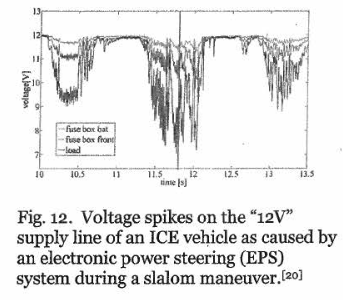EDIT: This PDF contains very detailed electrical information for the EEs who wanna go through the complaint: https://www.autoevolution.com/pdf/news_attachements/breaking-nhtsa-petition-shows-tesla-s-sudden-unintended-acceleration-is-real-and-curable-217525.pdf
Last year at /r/RealTesla, a Chinese video of a car rocketing at full speed for 1+ minutes before crashing / killing a pedestrian made the rounds. We all recognized it as one of the weirder cases of “Sudden Unintended Acceleration”, and I think that particular video really changed some minds.
While a lot of SUA events are from driver-error, it began a search into why Teslas seemed to be getting more SUA above-and-beyond the industry normal. This investigation (now filed under NHTSA) suggests that the ADC could be miscalibrated during a load-dump (or other electrical surge-like) scenario.
If the ADC associated with the accelerator pedal is off, then the Tesla will have the pedal at the wrong level of acceleration until the next calibration event, which is not going to happen until over a minute later.
This is extremely similar to that Chinese runaway Tesla, and perfectly seems to explain it. I’m glad that someone seems to have gotten to the bottom of this.
I need a followup comment post. I cannot believe how huge this PDF is. The alleged evidence is comprehensive and solid.
Page 16 shows the voltage levels of the 12V line (eventually feeding the sensors / microcontrollers ADC) getting wrecked by just… turning left and right with the 1.2kW steering wheel. To be fair, this seems to happen in all cars, but its important to note that the following 12V line is “normal” case of cars.

Given this “changing 12V” situation (as you steer left-to-right and right-to-left), how does this affect the other parts of the Model 3? There’s a lot of analog circuitry going on here, but there’s a few notes.
-
The accelerator pedal is controlled by two voltages. Top voltage is how far down the pedal has been pushed, and the bottom voltage is how far up the pedal has been pushed. (so its a bit redundant for safety reasons, good design here). It takes over 10 pages to fully explain, but just know that there is a safety check, but its not sufficient for #2.
-
The 1.65V reference voltage is affected by the 12V supply voltage. It seems like the 1.65V is inadequately isolated. This means that the 1.65V somehow drops to 0.3V. This has a major effect on the ADC. When the voltage-reference changes voltage, the analog-circuitry in #1 goes haywire… especially if it happens during a calibration event.
Page 19 shows how to replicate this problem and prove the issue with the physical hardware on the Model 3. Pin44 is key on the circuit board.

Messing with the voltage-reference consistently causes the car to think the accelerator is pushed. This is proven in the following table when they miss with that voltage-reference.

So we can see the accelerator pedal at 0% (not pushed at all), but the software of the car pushing the pedal harder-and-harder as this voltage droop over the 12V line gets worse and worse. This is affected at the voltage level, before the signal is even digital or in memory. The voltage conversion itself (aka: the ADC, the analog-digital converter, is busted), so the Tesla logs in the final computer / logs will “prove” that the accelerator was pushed.
But that’s false. The physical pedal was at 0%. Its just a voltage glitch that confused the computer.
-
Well that explains why vehicle logs always show pedal misapplication, the pedal at 0% is being read out as 100% and logged as such… Unbelievable stupid mistake, a diode, capacitor and 3.3V / 1.65V (linear) regulator for just these few critical ADC lines could have prevented this nonsense for $1, even DIY/Arduino hackers know that motors need to be isolated from sensitive stuff like the CPU and especially from the analog circuits.
Well, potentially explains.
It’s not proven. But it’s enough of an analysis to explain how the problem could occur. I wouldn’t say this docent rises to the level of a smoking gun.
But we know that the vehicle logs in the French and Chinese case claimed that the pedal was pushed when it probably was not.

